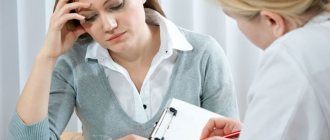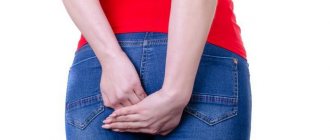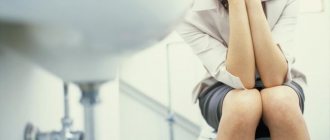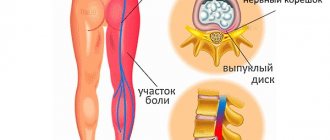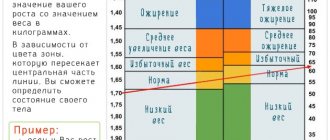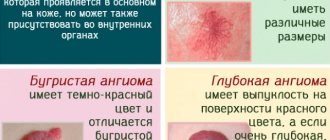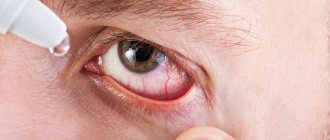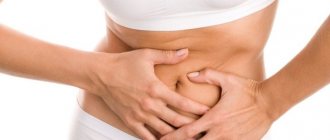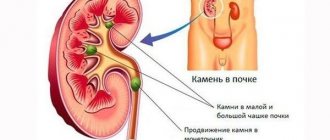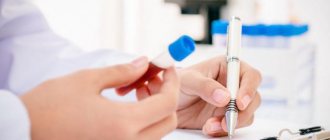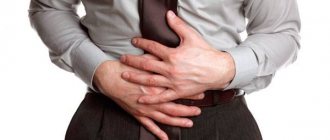Urinary incontinence in old age in women (synonym: incontinence) is a severe negative impact from a medical, personal and social point of view.
The frequency of the phenomenon varies according to conditions and ranges from 5-15% of the total adult population living at home, 20-30% of those hospitalized, up to 70% in nursing homes. In general, problems with incontinence in women begin at the age of 50-70 years.
Urinary incontinence is often associated with significant medical conditions, including the insertion of an indwelling catheter into the bladder, sepsis in the urinary system, bedsores in bedridden patients, and cystitis in women.
Diagnostics
To make a correct diagnosis, a urologist is needed; she prescribes a comprehensive examination:
- collecting data on the course of the disease, on the nature and frequency of urine discharge, intensity and volume, number of births, whether there have been surgical interventions and whether the person suffers from diseases;
- vaginal (internal) examination - at this stage the doctor takes a smear for laboratory testing of the environment of the vagina and cervix;
- They do an ultrasound of the ureter, bladder, and kidneys. This is necessary for the doctor to determine the presence and absence of inflammation.
In addition to this, a general urine test is performed to detect infections (hematuria and glycosuria).
It is important to emphasize that older people often suffer from asymptomatic bacteriuria, which does not cause incontinence and does not require treatment, except in patients whose leakage has recently appeared or is accompanied by high fever or burning when urinating.
Pelvic check
Women need a pelvic examination. The following reasons:
- Atrophic vaginitis causes or worsens the course of urinary incontinence.
- During the test, it is necessary to assess the ability to contract the muscles of the pelvic floor and, according to this, plan treatment.
- Many older women do not take constant gynecological monitoring seriously. A pelvic smear test (Pap smear) can rule out the presence of cervical tumors.
- As part of the check, provocative tests are performed to exclude urine leakage during exertion, including coughing and the Valsalva maneuver. If there is vaginal prolapse, it is necessary to achieve vaginal prolapse during testing with a finger or with a pessary (a device that is inserted into the vagina to support the uterus, bladder and rectum) to rule out occult urinary incontinence due to stress.
Assessment of residual urine in the bladder
Assessing residual urine in the bladder after sufficient voiding provides information about voiding efficiency and the risk of hydronephrosis, renal injury, and infection.
Although testing can be done using a catheter, ultrasound is the preferred method.
It should be remembered that problems such as bloating or intestinal obstruction can make ultrasound examination difficult.
Imaging check
There is no specific imaging test as part of the evaluation of a patient with urinary incontinence. The choice of a specific diagnostic procedure depends on the clinical condition and treatment options.
Ultrasound examinations of the kidneys and urinary tract provide information about the volume of the bladder, the amount of residual urine after emptying the bladder, stones or tumors of the urinary system.
Epidemiology
Data on the incidence of urinary incontinence in different age groups are very contradictory (Table 5-5).
Table 5-5. Frequency of urinary incontinence in different age groups (Abrams P., Khoury S., Wein A., 1999)
Women suffering from impaired urinary control, which affects not only their personal but also social life, are nevertheless quite reluctant to address these complaints to a specialist. The rate of seeking medical attention for urinary incontinence is low.
The prevalence of urinary incontinence increases with age. 50% of women aged 45 to 60 years have ever noted involuntary urinary incontinence or stress incontinence or stress incontinence, manifested by coughing, sneezing, laughing, fast walking, and in more severe forms, when changing body position at rest, or other forms of urinary incontinence associated with overactivity of the detrusor or urethra (urgent urinary incontinence), accompanied by a sharp urgency and pollakiuria. For most women, urinary incontinence begins at the same time as their last menstrual period.
According to epidemiological screening among working women over 40 years of age, conducted by the urological clinic of the First Moscow State Medical University named after. THEM. Sechenov, stress urinary incontinence was noted by 68.13% of respondents: 28.9% of women of late reproductive age and 58.7% of women in various periods of menopause.
Treatment of urinary incontinence in older women
Treatment can help more than 80% of people with the problem.
Exercise and behavioral therapy (one of the leading areas of modern psychotherapy) are the most successful.
Also, urinary incontinence in women after 70 is often treated with medications.
Medications
- Urotol , 2 mg tablets with the active ingredient Tolterodine;
- Enablex with the active ingredient Darifenacin* (Darifenacin*);
- Fesoterodine (Fesoterodine fumarate).
Homeopathic medicines for urinary incontinence:
- Causticum;
- Pareira;
- Sepia;
- Zincum.
Here are some of the most common homeopathic remedies used for stress incontinence.
Attention! According to a recent study, the drugs only help about 20-30% of women who take them and often have significant side effects. Therefore, before taking pills, you need to discuss everything with your doctors.
Kegel exercises
To strengthen your pelvic floor muscles, squeeze and hold for 10 seconds. vaginal muscles, then relax them.
To find and feel the muscles, you need to imagine that you are trying to stop the flow of urine so as not to wet yourself, without particularly straining the buttocks or abdominal cavity.
Keep your muscles tense for 10 seconds, then relax for 10-15 seconds, and again. Do this exercise 2 times a day (day and evening) for 20 approaches.
Treatment of urinary incontinence in women with folk remedies
Next, we will consider the most common recipes from the arsenal of traditional medicine:
Recipe #1:
- mix St. John's wort, knotweed, valerian root and hop cones in equal proportions - 2 tbsp.
- Next, the collection is steamed in a glass with boiled water, left for half an hour and taken before meals.
Recipe #2:
For involuntary and uncontrollable incontinence, the following can be used from the arsenal of folk remedies:
- take St. John's wort, coltsfoot, centaury in equal parts - 1 tbsp. l.
- Next, you need to brew the herbs in a glass of boiling water and leave for 30 minutes. and take twice a day.
Other recipes for treating urinary incontinence in older women:
- Sage: 50 gr. sage is steamed in a thermos, pour 1 liter. boiling water, left for 2 hours - take half a glass 3 times a day.
- Bird cherry bark, collected during its flowering period, crushed - 2 tbsp. l. steamed in 300 ml. boiling water, boil in a water bath for 10-15 minutes, infuse and take throughout the day as tea.
- Blueberries with blackberries: add 2 tbsp to 0.5 liters of water. l. blueberries and blackberries, boil for 20 minutes. over low heat, leave for an hour and take as tea.
- Lingonberry recipe: mix 2 tbsp. l. leaves and berries of lingonberries and St. John's wort in an iron container, pour boiling water over the broth and put on low heat for 8-10 minutes, then let the broth sit for half an hour and take half a glass 3 times a day.
- Yarrow: 1 tbsp. l. Steam yarrow leaves in boiling water, leave for half an hour and drink 100 ml. three times a day before meals. You can also use St. John's wort - the recipe is the same, and to enhance the positive effect of medicinal plants, you can take them in equal parts for collection.
- An effective infusion of dill seeds: it helps solve the problem of incontinence quickly and effectively. Just brew 2 tbsp. l. in 300 ml. boiling water, let it brew and drink once a day, preferably in the morning.
In addition to treatment with folk remedies, all women should exclude strong tea, coffee and caffeine-containing products from their diet.
Acupuncture
Acupuncture may help, depending on what is causing the incontinence. In one American study, women underwent 4 weekly bladder acupuncture treatments and experienced significant improvement in symptoms.
What drink?
Only the attending physician can answer this question. The fact is that for different types of disease, the range of drugs used may not coincide at all. Self-medication for incontinence is dangerous and can lead to worsening of the condition. And some medications simply will not be given to the patient at the pharmacy without a prescription.
Types of medications used to treat incontinence:
- Antidepressants,
- Nootropics,
- Sedatives,
- Antispasmodics,
- M-anticholinergics,
- Estrogens,
- Adrenomimetics,
- Vasopressin analogues.
| Main forms of the disease | Signs | Common Causes |
| Urgentnaya | frequent urge to urinate, bladder fills quickly | bladder muscle spasm |
| Stressful | Urine is released as a result of physical activity, walking, coughing | weakening of the bladder neck, urethral sphincter |
| Enuresis | Urine is released involuntarily | dysfunction of the autonomic nervous system |
Mixed incontinence is also often observed, in which signs of urgent and stress forms are observed.
Most often, medications are effective for urgent and mixed forms of incontinence, enuresis, and less often for stress.
M-anticholinergics
Substances of this type act on the M-cholinergic receptors of the bladder. Anticholinergics help reduce tone and relax the muscles of the bladder, increasing its available volume. Effective for urgent forms of incontinence. Taking anticholinergic drugs reduces the frequency and severity of the urge to urinate. The bladder becomes less likely to overflow, and therefore the frequency of urges decreases.
Popular anticholinergic drugs based on tolterodine: Detrusitol, Urotol, Uroflex, Roliten. The course of treatment with medications of this series is at least a month. The drugs Vesicare and Enablex use other substances - solifenacin, darifenacin. The effect of these drugs can be noticeable after just a week. Contraindications for anticholinergic drugs are pregnancy, narrowing of the ureters, and stones in the bladder.
Antispasmodics
Antispasmodics have a similar scope of application to anticholinergics. They fight bladder muscle spasms and increased excitability. Reduce urinary instability and the number of urges. Indicated for mixed and urgent forms of incontinence. From this group of drugs we can note Spazmex (trospium chloride), Betmiga (mirabegron). Also popular are drugs based on oxybutynin (Driptan).
Antidepressants, nootropics and sedatives
The mechanism of urination is regulated by the brain and spinal cord. Therefore, neurological and mental disorders can disrupt this mechanism. Some antidepressants, sedatives and nootropics can help with incontinence of a neurogenic and psychogenic nature.
Very often, among antidepressants for incontinence, doctors prescribe Imipramine, Duloxetine, Melipramine. Nootropics, such as Pantocalcin, Pantogam, Phenibut, Picamilon, have an auxiliary effect, strengthening the nervous system. Sedatives and tranquilizers relieve nervous tension and normalize sleep.
Antidepressants should not be taken if you have hypertension, pregnancy, liver disease, or glaucoma. Also, antidepressants often cause side effects, such as seizures, and can negatively affect the condition of the heart, liver, and blood.
Hormonal drugs
The doctor may prescribe analogues of female hormones if incontinence is caused, among other reasons, by a lack of these hormones in the body. This is due to age-related changes in women during menopause. Lack of estrogen leads to weakness of the pelvic muscles, which support the urethra and bladder neck in the desired position.
When treating incontinence (most often stress-type incontinence), estriol-based drugs are used, such as Ovestin, Microfollin, Presomen. They can be used both in the form of tablets and in the form of vaginal suppositories. Many urologists, however, question the effectiveness of hormones for incontinence in women.
Adrenergic agonists
This group of drugs are synthetic analogues of adrenaline and act on the alpha-adrenergic receptors of the bladder neck, helping to increase its tone. Adrenergic agonists are prescribed for stress incontinence. However, the effect of use is not always observed. Popular drugs in this group are midodrine (Gudron), ephedrine.
Preventing uncontrolled urination
In a woman’s body, all processes are so interconnected that the best prevention of uncontrolled urine loss is timely treatment of gynecological, endocrine, urological and psychological diseases.
Every girl from her youth should perform Kegel exercises daily, which, in addition to preventing incontinence, is also an excellent preparation of the pelvic muscles for the upcoming birth
